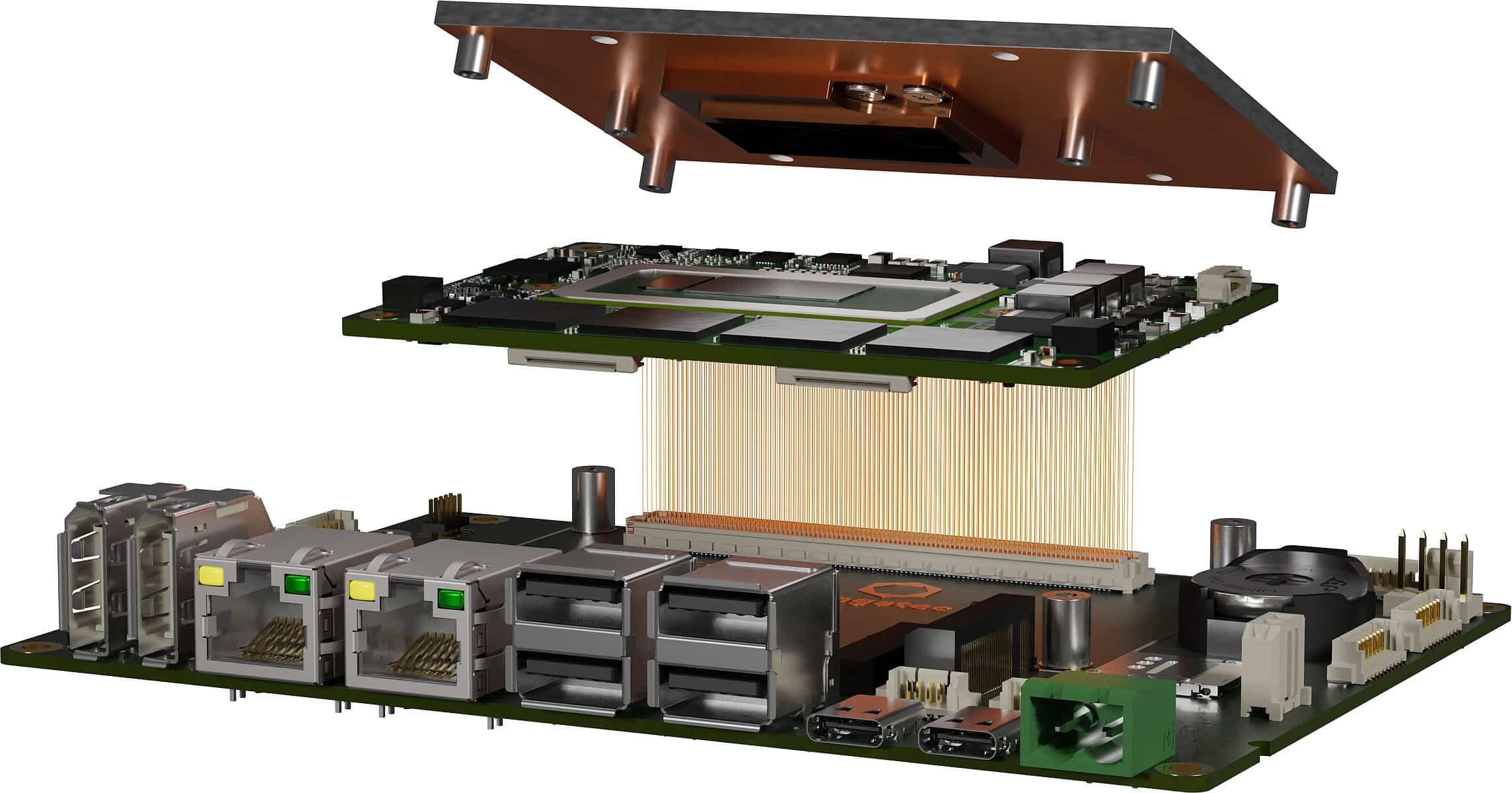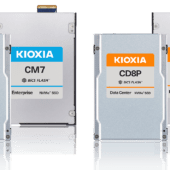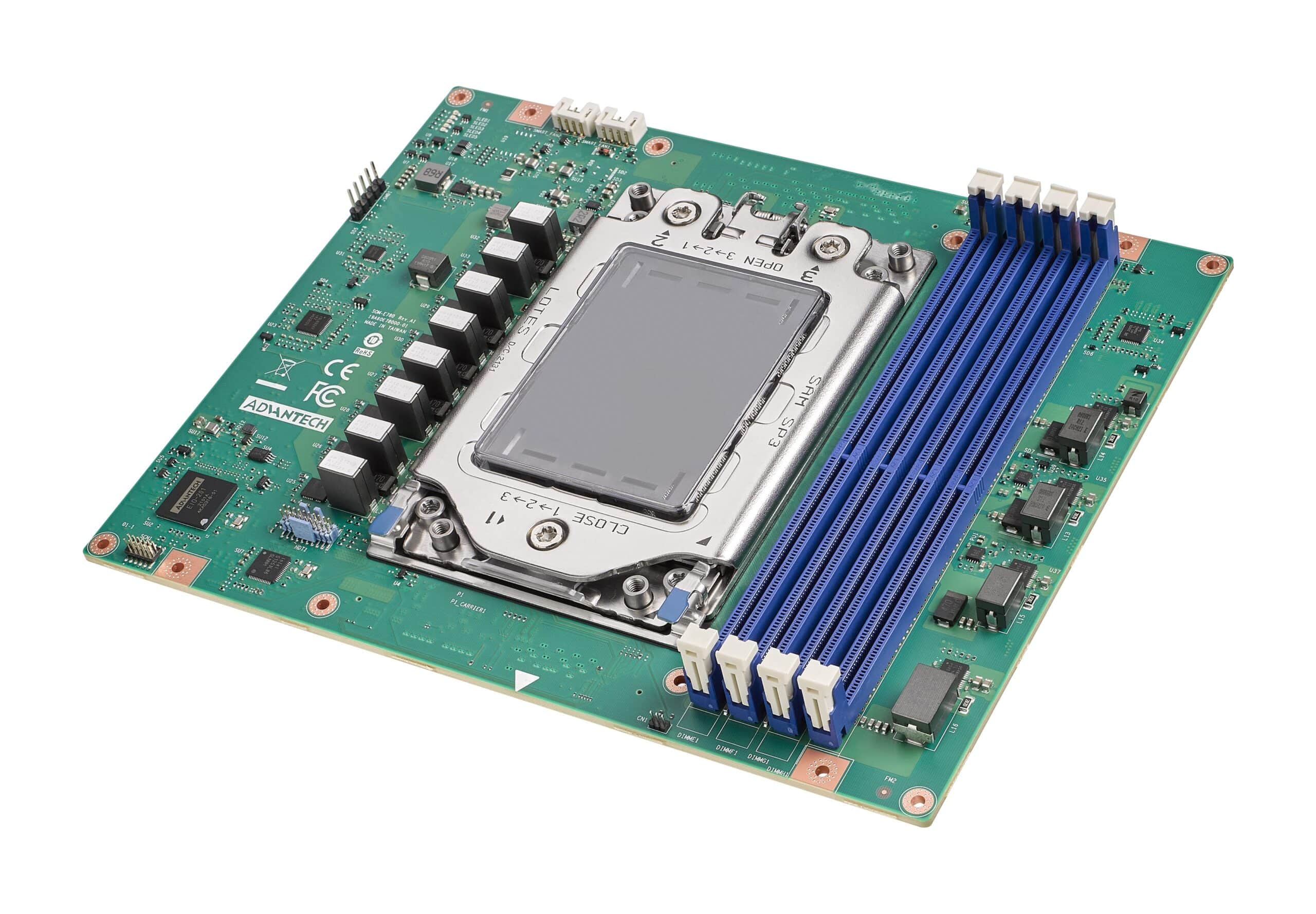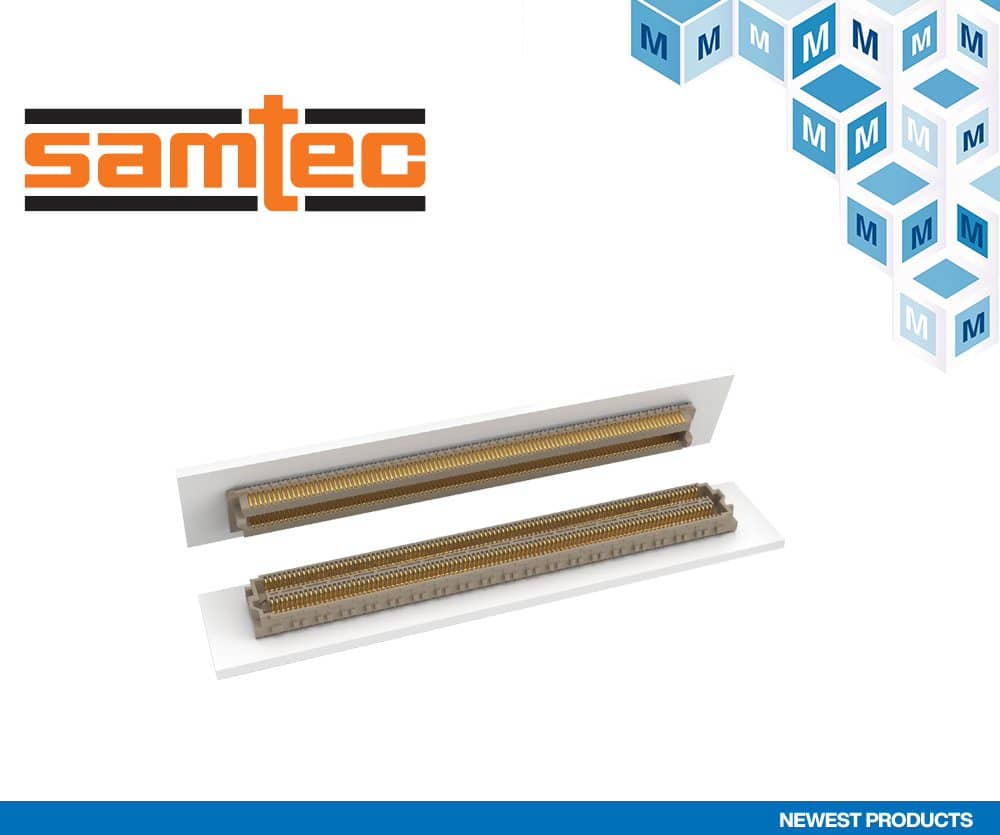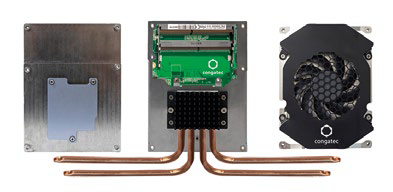COM-HPC™ is the new PICMG standard for high-performance COM (Computer-on-Modules) modules. The pinout and thus also the functionality have recently been officially approved. Spanish Electronics Magazine reveals more details.
Scheduled for the first half of 2020, there is still some time before the final ratification by the PICMG of the COM-HPC specification. However, the PICMG subcommittee has already approved two key aspects in November 2019: physical measurements and distribution. This allows the companies involved in the definition of the specification to present their first products on the market shortly after its official ratification. The information that can be released to the public up to that time is strictly limited. Revista Española de Electrónica has been given the rare opportunity to share more details about the distribution and measurements of the COM-HPC standard, which many developers of high-speed embedded systems will surely use with the next generations of Intel and AMD server processors. mid-range / high-end embedded. IHS Markit estimates that COM modules will represent around 38% of the total sales of boards, modules and embedded computer systems in 2020. This explains the importance of the changes in this market which, since the launch of the first COM module: has created two important standards for high-end embedded computing: ETX and its successor COM Express.

Higher performance, more interfaces
The need for a new specification to complement COM Express is easily explained: as a result of digital transformation, the demand for embedded computers to provide high-speed performance is growing. To serve the new class of embedded edge servers, scalability must be unlimited. With its 440 pins, COM Express does not have enough interfaces for powerful edge servers. The performance of the COM Express connector is also slowly approaching its limits. While COM Express can easily handle the 8.0 GHz clock speed and 8 Gbit/s throughput of PCIe Gen 3, the verdict is still out on whether the connector meets certain technological advances like PCIe Gen 4.
Headless Embedded Server Performance
The need for ultra-high embedded edge performance and extended connectivity is greatest in the new class of headless edge servers that are increasingly being used as distributed systems in industrial applications for harsh environments and extended temperature ranges. To illustrate this need for high-level performance, take, for example, an autonomous vehicle that uses AI vision and logic to establish situational awareness: it just can't wait for a cloud algorithm to compute when things happen. this having hard; You must be able to react instantly. The same applies to collaborative robots. This requires systems to provide at least 10GbE of connectivity, as well as the ability to use a large number of parallel computing units, for example, to pre-process data from image sensors or run complex deep learning algorithms. Today, GPGPUs are increasingly used to execute such flexible and multifunctional tasks. Often replacing FPGAs and DSPs, they need high-speed connectivity to CPU cores, and this need increases with the complexity of the tasks. With their multiple PCIe lanes, COM-HPC systems can accommodate significantly more accelerator cards for greater performance gains than COM Express ever could.

Massively parallel data processing
A configuration that combines powerful CPUs and massively parallel data processing capability is also required in healthcare imaging, where the use of artificial intelligence is increasing to support medical diagnosis based on existing findings. The same performance requirements apply to the myriad vision systems used in industrial inspection systems and public video surveillance systems. The entire field of Industry 4.0 applications also needs more powerful connectivity as more and more stand-alone machines and systems become connected. All of this increases the demand for high-speed interfaces in embedded systems to implement high-performance Internet solutions, including TSN support for real-time touch behavior. Additionally, more and more workloads must be consolidated onto a single system. In addition to data pre-processing in vision and deep learning systems, this includes firewalls and detection systems for intrusion detection, which must process virtually identical loads parallel to running applications. This doubles the requirements and mandates the use of hypervisor technologies for real-time capable virtual machines, such as the RTS Hypervisor from Real-Time Systems. Other applications include data collectors for automotive test systems and measurement technology for 5G, as well as industrial storage systems with fast NVMe memory connected via PCIe. Edge logic for 5G radio towers and modular blades in industrial server cabinets can also benefit from high-performance COM modules.

Up to one terabyte of RAM
COM HPC will meet these high-speed performance requirements with up to 100 GbE, up to 32 Gb/s PCIe Gen 4 and Gen 5, as well as up to 8 DIMM sockets and high-speed processors with more than 200 watts of power. The new standard distinguishes two basic variants: headless COM HPC server modules, which can also be called SoM modules (Server-on-Modules), and COM HPC client modules, which follow the concept of COM Express Type 6 modules. The SoM COM HPC modules will be able to accommodate a whopping 1,0 terabytes of RAM with their 8 DIMM sockets. They will also run up to 8x 25GbE and support up to 64 PCIe Gen 4 or Gen 5 lanes, meaning up to 256GB/s I/O performance. Such lightning-fast connectivity falls into the embedded edge server class, with the new PCIe lanes offering transfer speeds of over 32 Gbit/s with PCIe Gen 5. This performance is truly necessary and can be implemented directly through high-speed interfaces. performance from components with the ability to transfer 28 Gbs Non-Return-to-Zero (NRZ) are now available. In addition, up to 2 extremely powerful USB 4 interfaces are planned via the 800 pins. Based on Thunderbolt 3.0, these interfaces offer 40 Gigabits per second (Gbps). This corresponds to approximately 5 Gigabytes (GB) per second and is approximately twice as fast as USB 3.2 with a maximum of 20 Gbps, which is also supported up to 2 times. An additional 4 USB 2.0 interfaces complete the USB options on the HPC COM server modules. Alongside native 2x SATA, support for eSPI, 2xSPI, SMB, 2x I2C, 2xUART and 12 GPIO is also provided for integrating simple peripherals and standard communication interfaces, eg for service purposes.
Server Board Management
Another new feature of COM-HPC is the integrated system administration interface. This software interface, which is currently being defined by the PICMG subcommittee, is intended to include a small subset of the powerful and complex IPMI definition in the COM-HPC specification to allow easy implementation of full server functionality. With this interface, COM-HPC will offer true edge server functions that can be greatly increased by integrating suitable server-type BMC (Board Management Controllers) controllers on motherboards. Relevant carrier plate design guidelines will be needed to help newcomers to the standard get started. The specification will also offer the possibility of developing COM-HPC device modules for graphics processors or FPGAs. For this purpose, the specification defines PCIe clock inputs, so that COM-HPC modules can also be used as clients. This makes it possible to design flexible and compact heterogeneous computing solutions without the need for complex riser cards, whereas traditionally, graphics cards are built for PCIe sockets that mount at a 90-degree angle to the motherboard. They also offer significantly fewer connectivity options. The same applies to the alternative MXM3 graphics cards, as they too have only 314 pins. With COM-HPC allowing extremely thin modular designs, also for GPGPU, it is then possible to design slim slot cards for rack systems that offer both COM-HPC server modules and accelerator modules based on GPGPU, FPGA or DSP. Matching solutions for all three accelerator module variants are already being developed, so COM-HPC is no longer just a standard for embedded edge server processors, but can also be used for GPGPU, FPGA and DSP expansion.
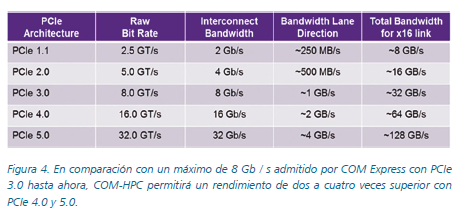
800 pins instead of 440
Alongside this class of ultra-high performance embedded edge server, which sets a whole new standard for robust embedded computing, the second category of COM-HPC client modules sits a little more discreetly above the COM Express Type 6 specification. As the smaller footprint can accommodate only up to four SO-DIMM sockets, it's primarily the number of pins that makes a key difference: 800 pins clearly offer significantly more interface options than COM Express's 440 pins. But as long as COM Express can also handle PCIe Gen 4, which can be assumed at least with respect to backwards compatibility, COM Express system developers don't have to switch to COM-HPC client modules. In addition to 49 PCIe lanes (COM Express Type 6 offers only 24), there are now for the first time two 25GbE KR interfaces and up to two 10Gb BaseT interfaces, which is significantly more than the current single GbE LAN.
Another attractive feature is up to two MIPI-CSI interfaces, which enable cost-effective camera connections for situational awareness and collaborative robotics. Many developers will also appreciate the convenient, versatile and extremely powerful USB 4.0 interfaces offered in addition to 4x USB 2.0. There will be up to four, to connect ultra-fast memory with up to 40Gbps, or up to two 4K displays, including power supply and integrated 10GbE networking via a single USB-C cable. The graphics have also been fixed. Support now includes 3x dedicated DDI interfaces. Specific designs for DisplayPort, DVI-I/VGA, and DVI-I, HDMI, or DVI to LVDS converters now run on the motherboard. Other interfaces include 2x SoundWire and I2S, as well as 2x SATA; eSPI, 2xSPI, SMB, 2x I2C, 2x UART, and 12 GPIO round out the feature set.
SoundWire, which has been added as a new interface to the specification, will replace the currently used HDA interface. SoundWire is a MIPI standard that requires only two channels of clock and data, clocked at up to 2.288 MHz, to connect up to four audio codecs in parallel. Each codec receives its own ID which is evaluated. OEMs that have a business relationship with one of the companies involved in the new specification can already initiate suitable motherboard designs as long as they keep them under NDA and do not share them with third parties. The new specification will only be available as an open standard after the official release. Members of the PICMG COM-HPC subcommittee include Acromag, Adlink, Advantech, AMI, Amphenol, congatec, Elma Electronic, Emerson Machine Automation Solutions, Ept, Fastwel, GE Automation, HEITEC, Intel, Kontron, MEN, MSC Technologies, NAT, nVent , Samtec, Seco, TE Connectivity, Trenz Electronic, University Bielefeld, VersaLogic Corp. Adlink, congatec and Kontron are committee sponsors, while congatec Marketing Director Christian Eder serves as COM-HPC committee chair. He has also played an important role in the development of the existing COM Express standard as draft editor Stefan Milnor of Kontron and Dylan Lang of Samtec support Christian Eder in his role as editor and secretary of the PICMG COM-HPC committee. More information about the new COM-HPC Computer-on-Module standard and its distribution can be found at: https://www.congatec.com/COM-HPC y https://www.picmg.org/openstandards/development/
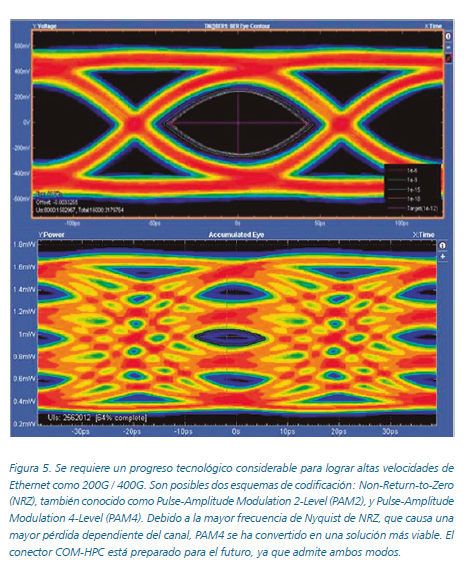
Server-style motherboard designs
Developers looking to get started with edge server level COM-HPC carrier board designs today should take a look at the conga-STX7 / Carrier mini-STX motherboard. It measures exactly 5,5x5,8 inches and is developed for COM Express Type 7 SoM modules, yet it impresses with an embedded server-style Board Control Controller (BMC) that provides full out-of-service/out-of-band access for ultra-efficient remote monitoring, management and maintenance capabilities. It incorporates an Aspeed AST2500 BMC, which is based on an 11MHz ARM800 processor, supports DDR4 1600Mbps, and provides on-chip PCIe 2D VGA for the management console. Congatec has optimized the controller firmware to meet the management requirements of embedded micro and edge servers based on COM modules. This includes the ability to use the existing embedded APIs of the PICMG standards to implement all the necessary alert and event logs in the remote management system through this sensor implementation. In addition, IPMI commands for chassis power control, KVM, and media redirection features have been implemented to support locally attached server consoles and remote KVM. A debugging guest console with output switching between different host system targets completes version 1.0 of this release.


